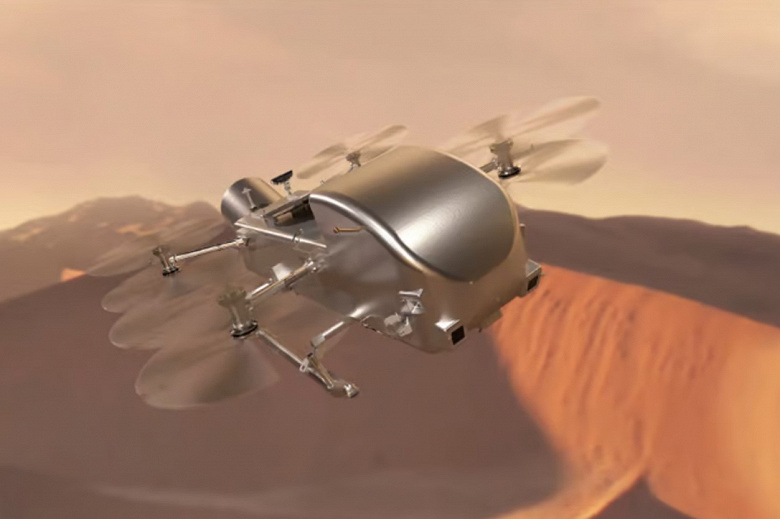NASA commits funds, resources, and launch year for Dragonfly nuclear-powered rotorcraft for mission to Titan
After years of anticipation caused by the COVID-19 pandemic and financial difficulties, NASA has finally given the green light to launch the interplanetary Dragonfly mission to Titan, Saturn's largest moon. The announcement of the launch of this ambitious mission, planned for 2028, was made after careful analysis and lengthy discussions.
Titan, located about 1.2 billion kilometers from Earth, is one of the most mysterious objects in the solar system. The complexity of its research attracts the attention of scientists, despite the high costs and technical difficulties. Titan, in addition to its status as Saturn's largest moon, is the second largest moon in the Solar System and the only one of the two moons to have a dense atmosphere denser than Earth's.
Of particular interest is the chemical composition of Titan's atmosphere, saturated with nitrogen and methane. These chemical components, transformed by solar radiation, form complex organic compounds that fall to the surface, creating a unique environment, possibly suitable for life. It is believed that even liquid water may be hidden under the dense cover of clouds and oceans of methane on Titan.
However, exploring such complex terrain requires an innovative approach. Classic landers are not suitable for Titan due to its «swampy» surfaces. Therefore, instead of a rover, NASA developed the Dragonfly aircraft. It is equipped with a radioisotope thermoelectric generator MMRTG and aluminum-titanium rotors, which will allow it to fly, carrying out a detailed study of the landscape and atmosphere of Titan.
This «Dragonfly» designed not only to conduct general research, but also to study Titan's organic chemistry and search for biological signatures, although Titan is not generally considered a good candidate for extraterrestrial life. It is viewed rather as an example of the “primordial soup”, which, according to scientists, gave rise to life on Earth.
Dragonfly is equipped with a wide range of instruments, including radiation backscatter sensors, a mass spectrometer, and instruments for analyzing weather conditions and seismic data, which will provide a more complete understanding of Titan's composition and structure.< /p>
According to Nicky Fox, deputy administrator of NASA's Science Mission Division, the Dragonfly mission opens new horizons in the study of interplanetary objects and will expand awareness of the conditions for supporting life in other parts of the solar system. systems.
Dragonfly's arrival on Titan is expected in 2034.

